360 cameras, by definition, capture all directions. As a result, in practice, the photographer does not have to worry about the orientation of the lenses in relation to his main subject. In full sun, is this practice still valid? Or should we favor an orientation of the lenses in relation to the sun? Answer in this article.
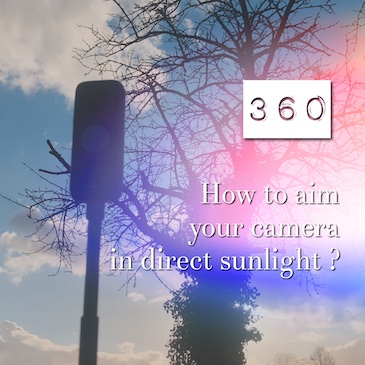
We will compare two different capture orientations: facing the sun and side sun
FACING THE SUN
In the first case, the front lens is oriented directly towards the sun. Thus it receives the sun’s rays directly, while the second lens is in the shade and captures a sunny scene.
It’s interesting to see the results on the image that is facing the sun, indeed it could have flare. Even if this effect is visible on the images, it is not very marked, in any case nothing prohibitive which would lead to think that the camera should never be directed towards the sun.
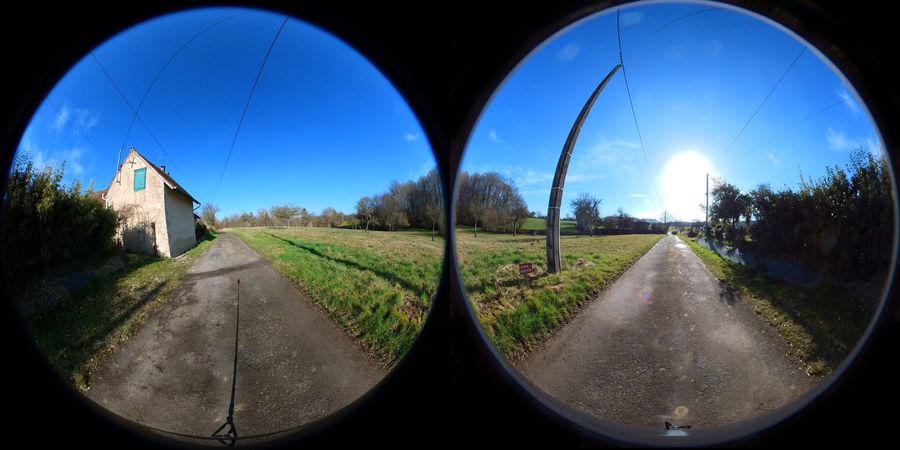
Regarding the merging of the images, although the two lenses have opposite orientations with respect to the sun, the transition between them is imperceptible.
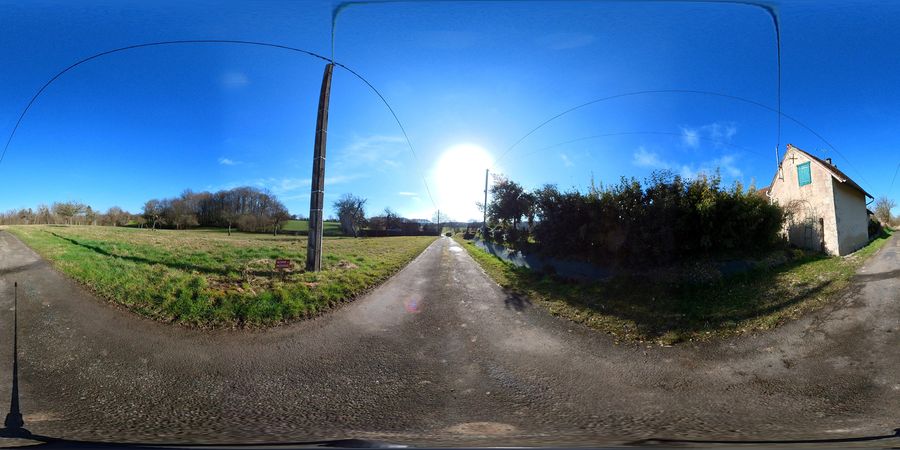
When we look in the details, we can notice some anomalies: “flare” and “dividing line” between the images :
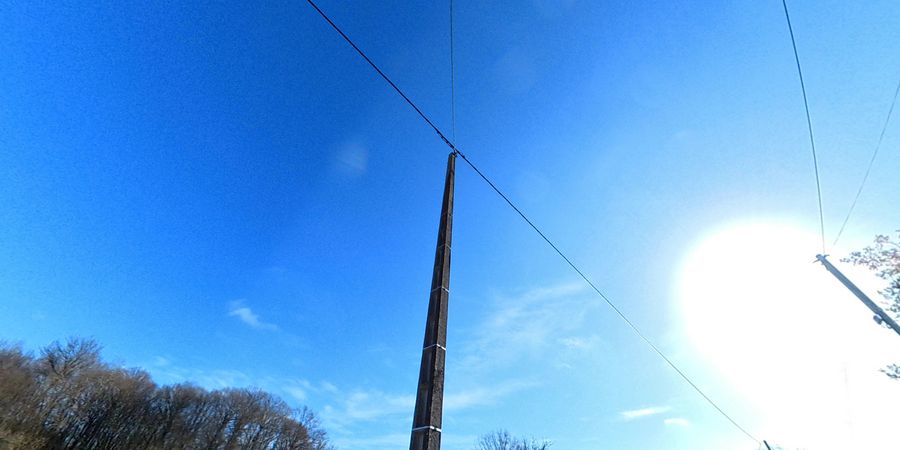
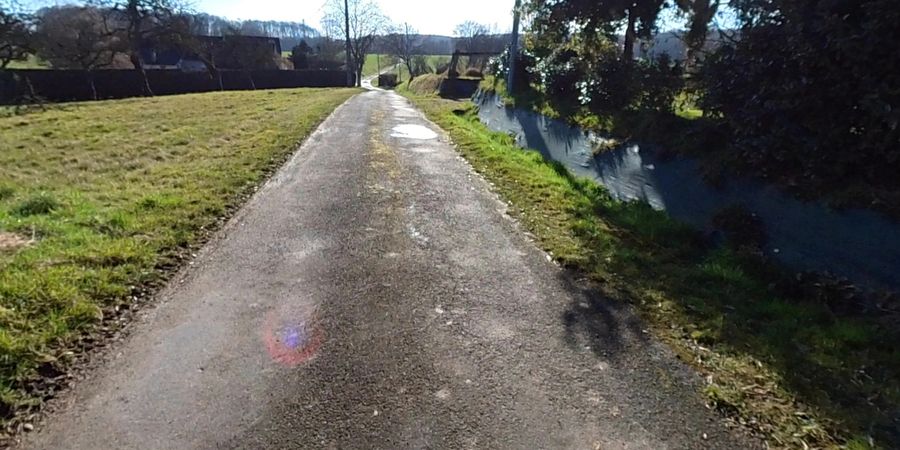
COASTAL SUN
In the second case, the camera is positioned so that the sun is on the edge, it is neither fully in the first lens nor fully in the second lens.
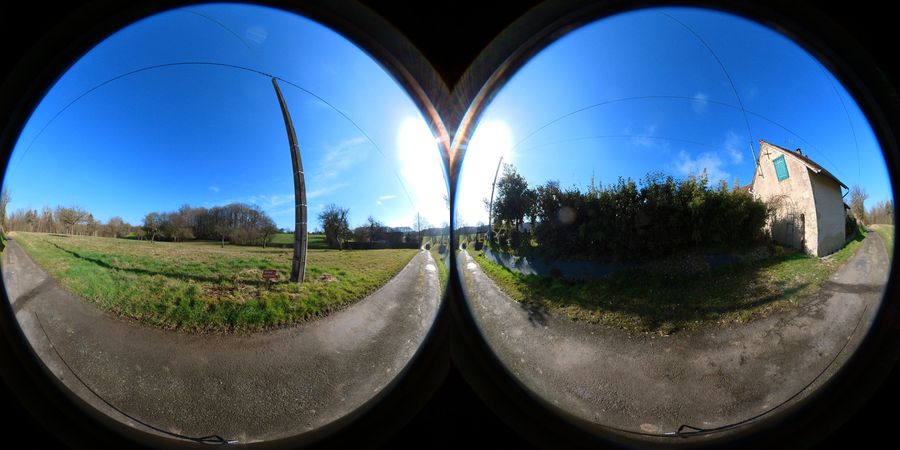
The two scenes captured by the lenses are thus lit in the same way, with a part in full sun and another part with the sun from the side. Since the two images of each lens are subjected to the same lighting, we can expect that the merged result will be more homogeneous.
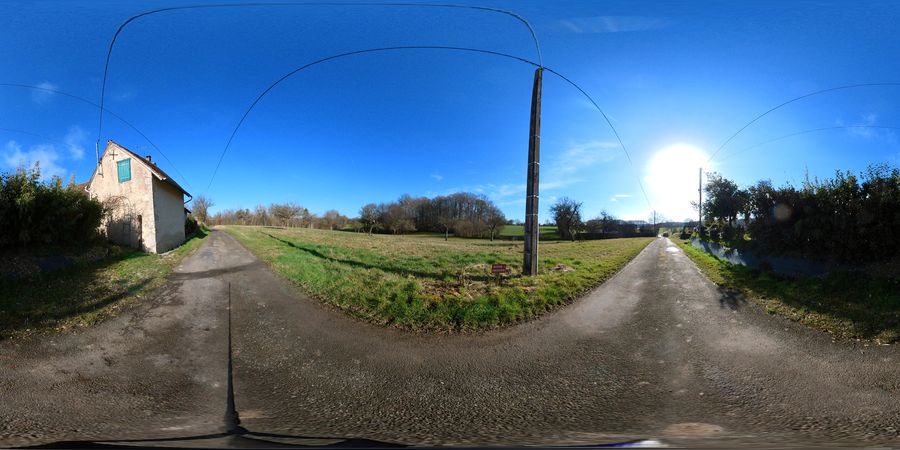
When we look in the details, we can notice some anomalies: “flare” and “dividing line” between the images :
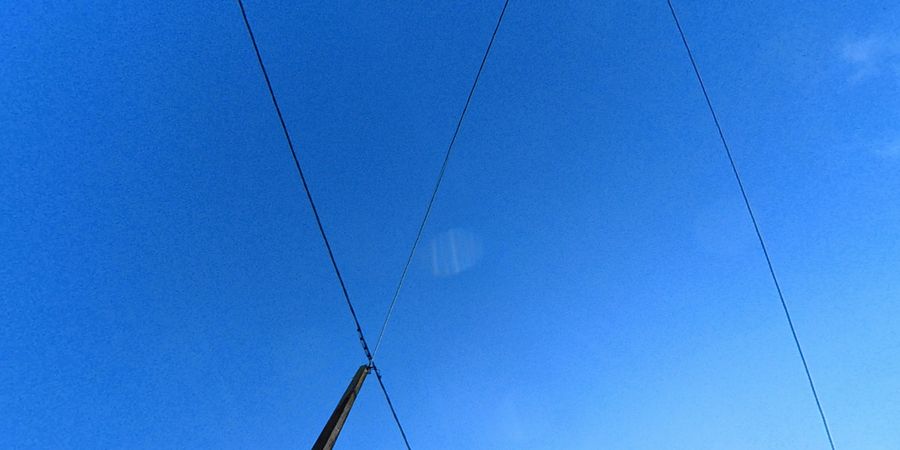
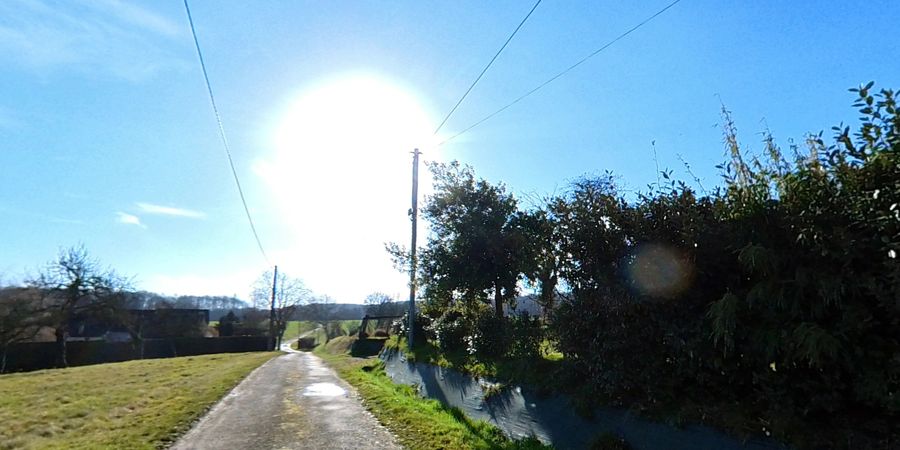
COMPARISON AFTER MERGER
Now that we have examined the merged images obtained with the two orientations, let’s make a comparison on specific areas.
Direct view towards the sun (top direct sun capture vs bottom side capture) :
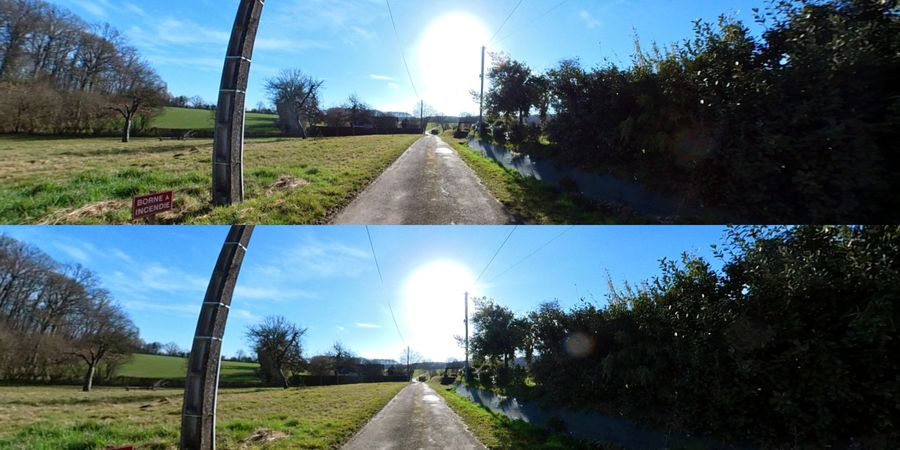
Side view on a contrasting area :

Direct view to the sun (top in LDR vs bottom in HDR) :
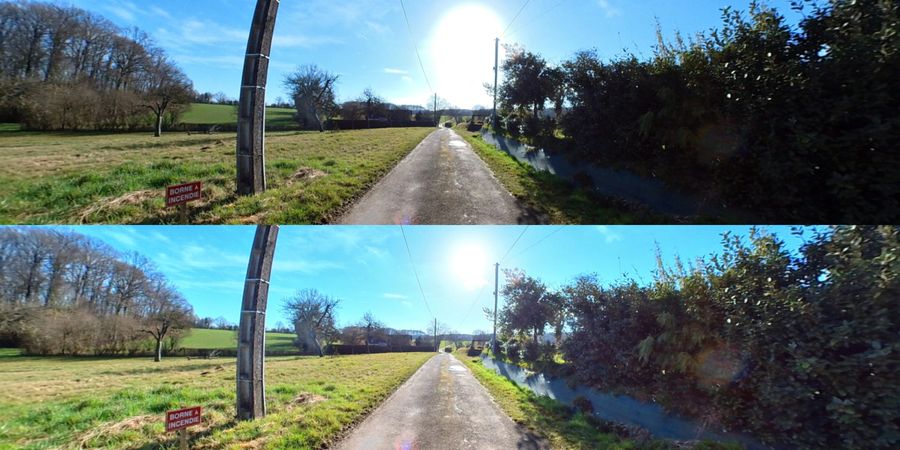
Side view on a contrasting area (top in LDR vs bottom in HDR) :
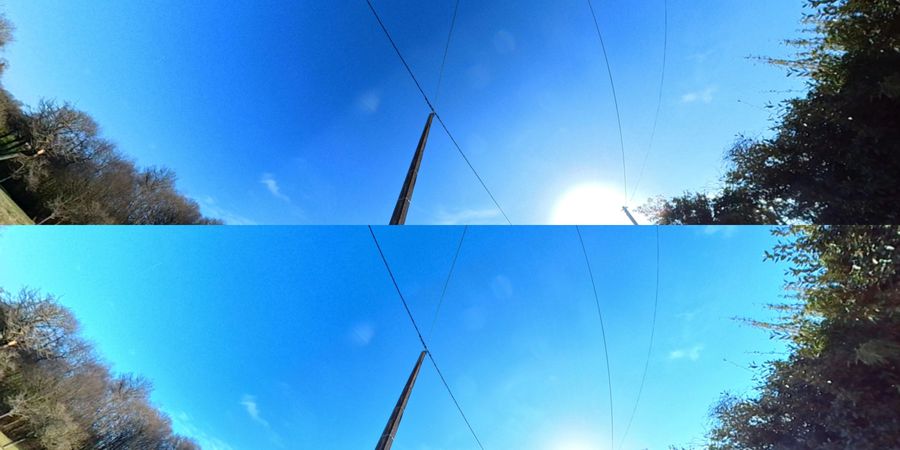
CONCLUSION
As we saw in this example, there is no glaring difference whether a camera lens is facing the sun or not. Under these conditions, the rule of not worrying about the orientation of the camera at all, and just keeping in mind that all directions are captured, remains applicable.
